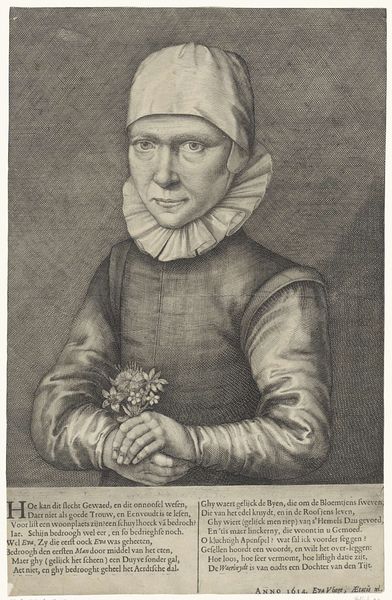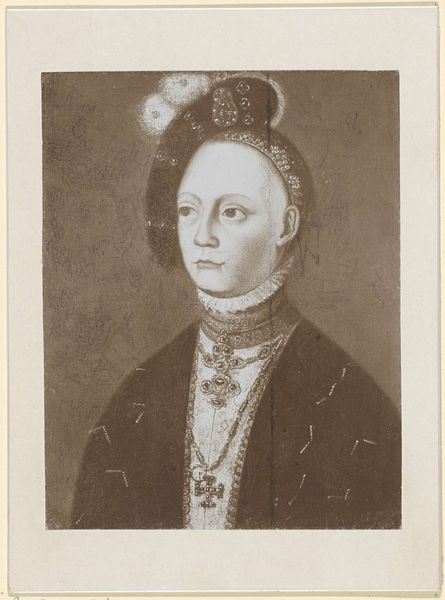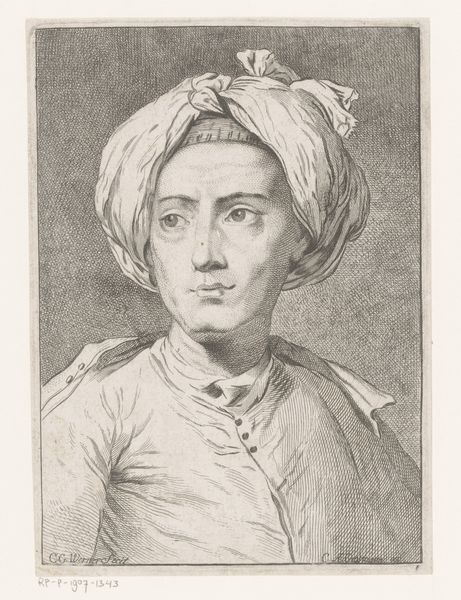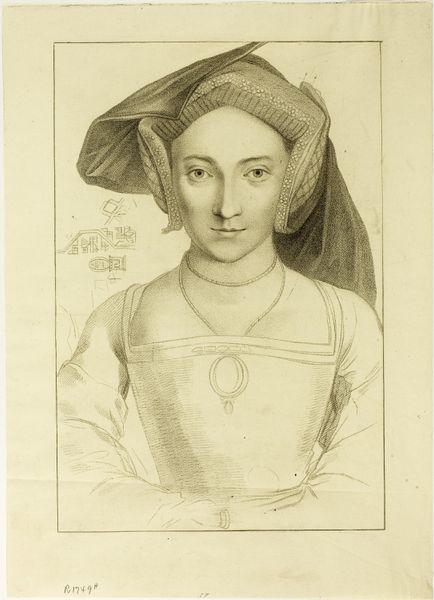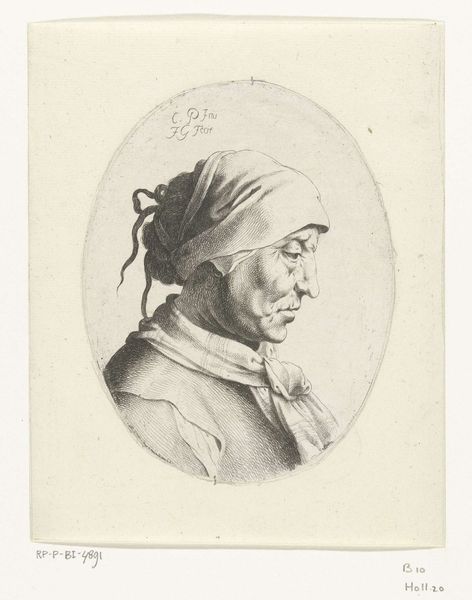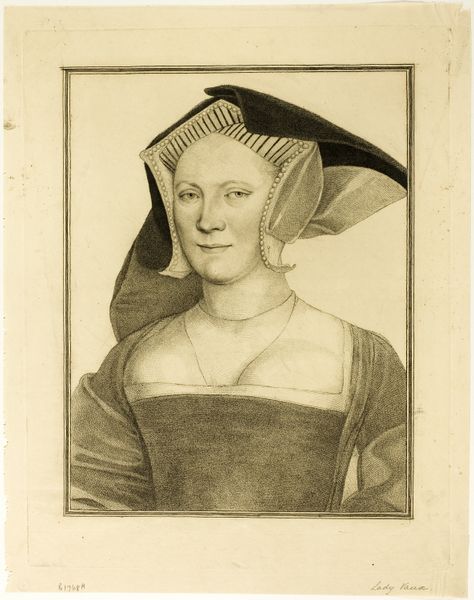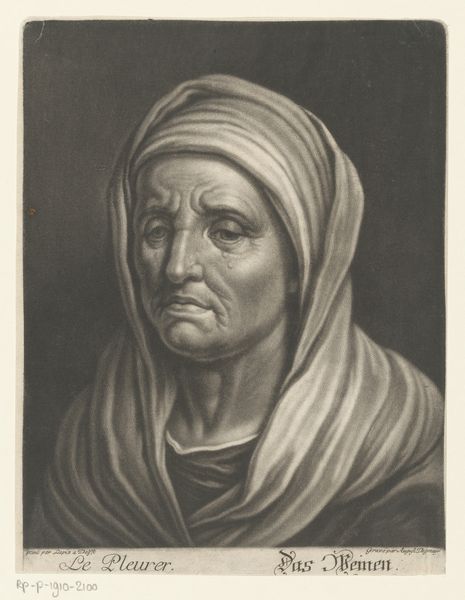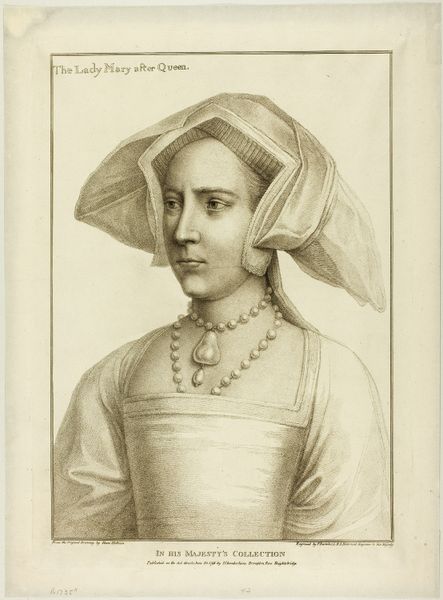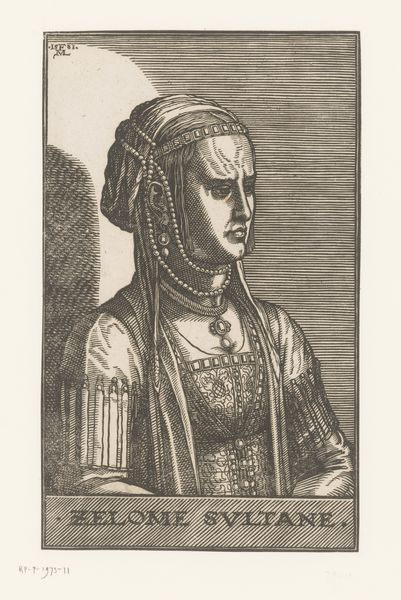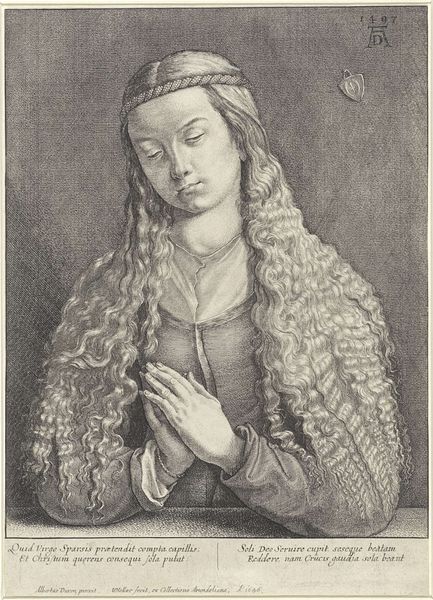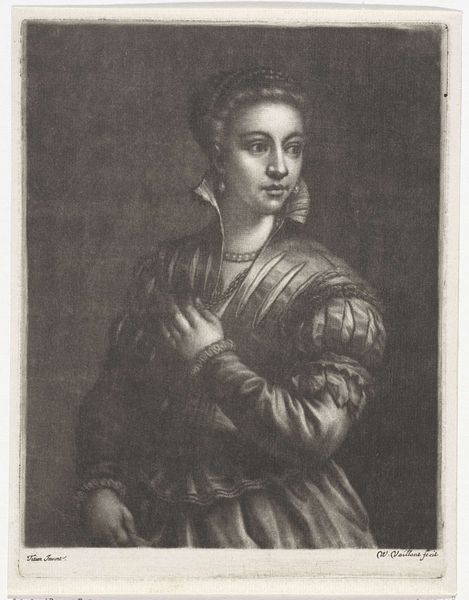
drawing, print, paper, engraving
#
portrait
#
drawing
#
portrait image
# print
#
paper
#
romanticism
#
portrait drawing
#
engraving
#
portrait art
Dimensions: 516 × 394 mm (image); 541 × 420 mm (sheet, cut within platemark)
Copyright: Public Domain
Curator: We’re looking at “Holbein’s Wife,” an engraving by Francesco Bartolozzi from around 1798, housed right here at the Art Institute of Chicago. Editor: It's immediately striking. A certain reserved quality, almost stoic, emanating from this portrait. The monochromatic palette adds to the gravity. Curator: Observe how Bartolozzi masterfully uses the engraving technique to create subtle tonal variations. The gradations give the figure a three-dimensionality despite the inherent flatness of the print medium. Editor: Right, and while the technique is beautiful, I'm drawn to thinking about this woman and the implications of the title, simply named, ‘Holbein's Wife.’ It’s deeply objectifying, erasing her individuality by defining her solely through her relationship to a man. We don’t even know her name. Curator: It’s an interesting tension. The linear precision in her clothing and head covering against the blurred, shaded background, create an almost architectural frame, reinforcing the central figure. The artist invites our gaze precisely to her face, where soft etching suggests an introspective psychological reading. Editor: But what does that gaze reveal? We’re positioned as spectators, complicit in the silencing of her narrative. The romantic idealization inherent in the period often obscures the lived realities of women, particularly their intellectual contributions or personal aspirations, which are effectively reduced here to domestic identity. Curator: I see her head tilted slightly as presenting itself. How light dances across the fabric of her head covering. There’s a wonderful use of visual rhetoric within the romantic style. Editor: Rhetoric that upholds power dynamics! How differently would we perceive this if the artwork bore her name and some identifier about HER? Bartolozzi’s skill is undeniable, but what purpose does it serve in perpetuating the erasure of female identity? Curator: Looking at it again, I see in her composed features an emotional depth that invites contemplation beyond our own reading. There’s no simple dismissal here. Editor: Perhaps… Still, it reminds me to always actively question representations of women throughout history—what stories remain unheard and how can we amplify them now?
Comments
No comments
Be the first to comment and join the conversation on the ultimate creative platform.
